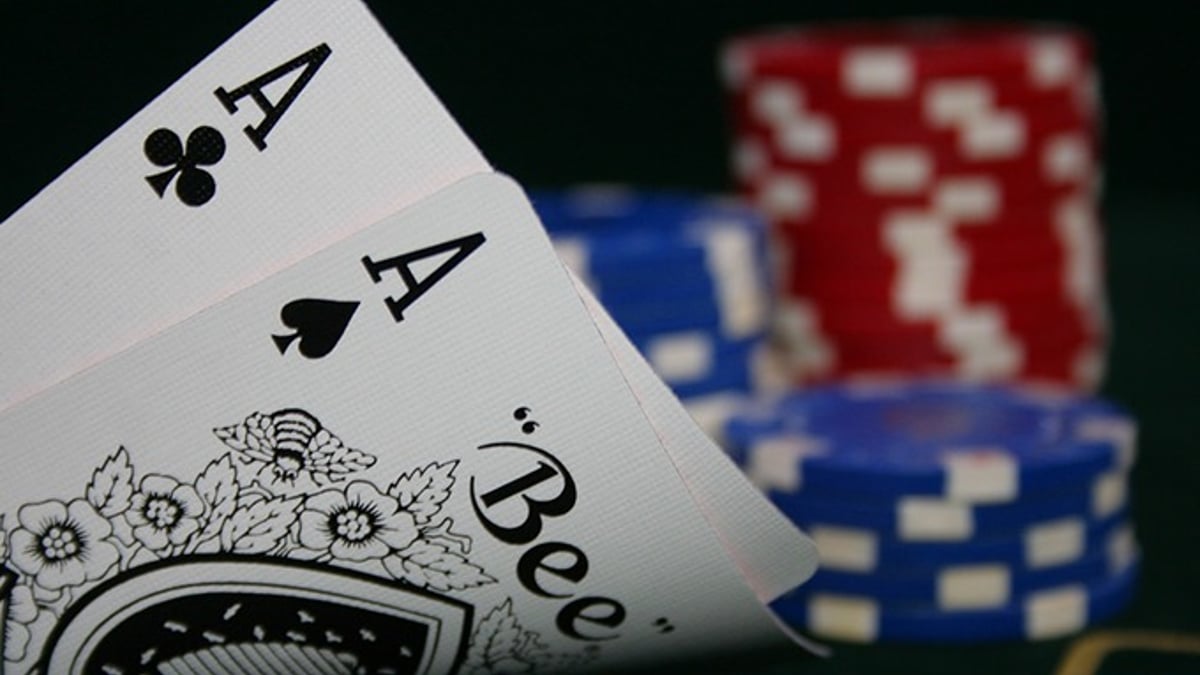Poker Basics: Starting Hands

To become an expert poker player you need to learn how to approach the game in the most logical manner. One of the best ways to do this is to see each hand you play as a journey. Essentially, each move you make is like a new step. If you can think about poker in this way, it's easier to make the right moves in every situation.
If you're looking to start as you mean to go on, here's a guide to starting hands in the most popular poker game, Texas Hold'em.
The Start of the Starting Hand
In a nutshell, a starting hand in Texas Hold'em poker consists of two hole cards from a standard deck of 52 playing cards. Thanks to this dynamic, there are 169 possible starting hands, which can be further broken down in 1,326 possible combinations when you consider each different suit.
As there are so many possibilities at the start of a new betting round, you need to consider whether you want to fold, call or raise (or re-raise) with your starting hand based on the following variables:
- Hand Value | It's important to remember that starting hands' rankings are always relative. Just because the chart says that A-J is a good hand to raise, this is only true if the action before you (and potentially after you) isn't too aggressive. As a general rule, you should use the following mantra: "if it's not good enough to raise with, it's not good enough to call with."
- Table Position | The position you have at the table will dramatically alter the hands you can play. In general, the closer you are to the button (the most advantageous position on the table as you always get to act last post-flop) the weaker your hand can be. For example, in a full ring game (nine players) you would fold A-T in first position, but you would raise it from the button assuming there wasn't much action before you.
- Stack Size | Much like table position, the size of your stack will determine whether or not a hand is worth playing. When you have a small stack the amount of post-flop play you have is limited, therefore you have to have a much tighter pre-flop range (i.e. play stronger hands). Conversely, if you've got more chips, you have more options later on in the hand and that means you can be a little more liberal with your starting hand selection.
Putting Your Starting Hand in Context
Before giving the above variables some context, let's quickly look at the hands you should be playing from certain positions if you were in a vacuum at a nine-handed table (i.e. you were alone in isolation):
First Position
- Raise with: A-A, K-K, A-Ks, Q-Q, A-K, J-J, A-Qs, A-Qo, or A-Js
- Call with: no hands
Early Position (seats 2-4)
- Raise with same hands as above, plus: 10-10, A-J, K-Qs
- Call with: K-Qs
Middle Position (seats 5-7)
- Raise with same hands as above, plus: K-Qo, K-Js, Q-Js
- Call with: A-10s, A-10o, K-Jo, Q-Jo, K-10s, 9-9, 8-8
Late Position (seats 8-9)
- Raise with same hands as above, plus: A-10s, K-10s, K-Jo, Q-Jo, 9-9, 8-8
- Call with: 77, 6-6, 5-5, Q-10s, Q-10o, K-10o, J-10s, J-10o, J-9s
All things being equal, you should use the above list of options to guide your play. However, let's assume you're in first position with a short stack and an aggressive player behind you.
Given what has been said in the previous section, it would make sense to remove A-Js and A-Qo from your raising range. Although they are still strong hands, they aren't ones that will play well against a raise when you're out of position.
Basically, when you're out of position you always have to act first and that means you never quite know what your opponent is going to do. Therefore, because they will have the upper hand later on, you need to be more conservative with your raises, which would mean something like A-Js being removed from your range.
How to Play the Perfect Hand
To keep things as simple as possible, undertake the following processes before you commit to a pot:
- Consult the starting hand chart outlined above.
- Consider your position at the table and your stack size.
- Ask yourself the following question: "Am I in a strong position overall?"
- If the answer is "yes" you should be more inclined to raise or re-raise with each suggested hand.
- If the answer is "no" you should be more conservative with your opening range.
In poker there are no hard and fast rules when it comes to starting hands. However, if you take the advice outlined here, you should find that you make fewer missteps at the table and enjoy many more successful journeys through the world of Texas Hold'em Poker.
Stay In The Loop With New Casino Sites & Industry News!
Industry News, Brand Updates. Sent Weekly.




